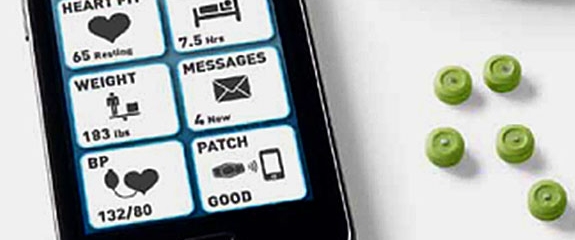The digital pill that’s easy to swallow

Smart phones and the associated technology play major roles in many of our lives. This has not gone unnoticed by the pharmaceutical industry. Various companies have developed applications for use by healthcare providers and patients. We take a look at some of the latest developments and what to expect next.
FierceBiotech have recently reviewed 10 smart phone applications produced by large pharmaceutical companies that serve to foster their relationships with end users and healthcare providers. Applications range from the ‘Go Meals’ application produced by Sanofi, which helps diabetes patients keep track of their diet, to an application produced by Eli Lilly that helps healthcare professionals search for places for patients in oncology clinical trials. A report by Ernst & Young in 2011 suggested a marked increase (78%) in pharma-initiated projects from 2009 to 2010 with more than 40% of the apps being specific to Apple’s iPhone.
How far we have progressed is, perhaps, best embodied by a medical device recently approved by the US Food and Drug Administration (FDA). The device, developed by Proteus Digital Health, Inc., is an ingestible sensor containing a silicon microchip about the size of a grain of sand. The sensor contains small amounts of copper and magnesium and their interaction with digestive juices produces a voltage, allowing the sensor to communicate with an external patch on the surface of the skin. The patch transmits relevant information to the patient’s mobile device, which can be shared, with the patient’s consent, with caregivers and doctors. This way doctors can determine whether the pill has been taken appropriately. The ingestible sensor was approved by European regulatory agencies in August 2010. Currently, FDA clearance is only for use with placebo pills. The intention is to gain approval for use with active medicines. Proteus has done clinical trials in patients with tuberculosis, heart failure, hypertension and diabetes.
Potential uses for the technology don’t end with simply monitoring compliance. Additional physiological and behavioural metrics that could be collected by the sensor include heart rate, body position and activity. The company is working with makers of the world’s most frequently prescribed drug, metformin, used to treat type 2 diabetes. The possibility of adding a wireless glucose meter to correlate dosage with glycaemic control is being investigated. Being able to compare biological response with adherence to prescribed dosing regimens is expected to provide an additional level of information in tailoring treatments to individual patients that will be of particular benefit to those suffering from chronic diseases.


